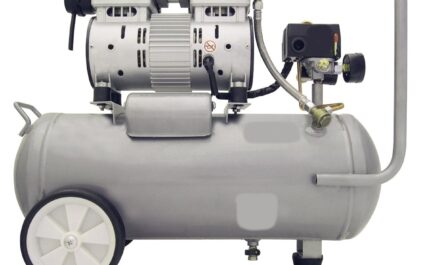
Foundries play a crucial role in manufacturing by producing metal castings for a variety of end-use industries such as automotive, industrial equipment, aerospace, defense, and more. Let’s take a deeper look at foundry services and the processes involved.
Metal Casting Processes at Foundries
Foundry Services different metal casting processes depending on the type of material, component design, required tolerances, and production volumes. Some of the main casting processes employed at foundries include:
Sand Casting
Sand casting is one of the most commonly used casting processes in foundries due to its ability to produce complex shapes at relatively low production volumes in a cost-effective manner. In sand casting, a sand mold cavity is created using a pattern, into which molten metal is poured. The metal is then allowed to solidify before knocking out the casting from the sand mold.
Permanent Mold Casting
For higher production volumes, foundries use permanent mold casting where metal molds made of machined metal like steel are used instead of disposable sand molds. The assembly, pouring, and ejection steps are similar but the molds can be reused numerous times, reducing per-unit costs. This process enables precise dimensional tolerances.
Die Casting
Die casting machines inject molten metal under high pressure into reusable steel dies to form intricate castings with close tolerances. It is well-suited for precision parts made of non-ferrous alloys like zinc, aluminum, and magnesium. Die casting delivers net shape parts with smooth surfaces and is often used for housings and small complex components.
Centrifugal Casting
This specialized casting technique uses centrifugal force to fill a spinning mold with molten metal. It is ideal for shapes that require an open design like impellers and pipes. The process offers dimensional consistency and surface finish. Alloys with high melting points like brass and bronze are commonly used.
Gravity Casting
Gravity casting involves simply pouring molten metal into flasks or permanent molds placed below the furnace. Components such as cylinder heads are gravity die cast. Though not as accurate as other casting methods, gravity casting is adequate for many simpler metal part designs.
Metal Treatment and Testing Services
Once castings are manufactured at foundries, various secondary processes may be required to prepare parts for downstream applications. Some key post-casting services include:
Cleaning and Descaling: To remove attached sand, casting fins, seams and impurities from casting surfaces. Methods used are sand blasting, machining, chemical treatments.
Heat Treatment: Castings may undergo heat treatments for modifications like hardening, stress relieving, normalizing. This imparts required mechanical properties to the casting.
Inspection and Testing: Non-destructive testing techniques such as dye penetrant, magnetic particle, radiography, ultrasonic testing check for defects. Mechanical tests evaluate material properties.
Finishing: Surface finishing processes provide the accurate dimensional specifications, surface finish and contours specified by customers. Grinding, milling, honing, polishing are some finishing techniques.
Quality Assurance Services
Establishing robust quality assurance systems is essential for foundries to deliver consistent casting quality and meet customer and industry standards. Some quality best practices adopted by leading foundries include:
Process Control: Parameters like melt temperature, alloying elements, mold filling, cooling rates, heat treatment cycles are tightly monitored.
Statistical Process Control: Statistical tools track process performance via attributes like defect rates. Early variations can be addressed.
Quality Certification: Foundries maintain certifications like ISO 9001, IATF 16949, AS 9100 to adhere to international quality management standards.
Incoming Material Inspection: Raw materials from suppliers are inspected to ensure specifications are met. Non-conforming materials are rejected.
Continuous Improvement Programs: Using tools like Six Sigma, 5S, Lean Manufacturing, quality systems are enhanced on an ongoing basis through employee participation.
Customer Requirements: Robust procedures and document control systems help comply with OEM specifications. Periodic process audits are conducted.
Applications of Metal Castings
The widespread use of metal castings produced by foundries can be seen across many sectors:
Automotive: Engine blocks, heads, housings, brake components, turbochargers, gears are some critical auto parts made via casting due to its economical production of complex inner sections.
Industrial Machinery: Intricate pump and compressor housings, agitatorparts used in heavy equipment, machine tools, material handling.
Aerospace: Airframe components like spacers, brackets, engine mounts, air ducts use casting for its design freedom and ability to combine functions.
Consumer Durables: Components for appliances, hardware, electronics, sanitary fittings cast due to design and cost benefits.
Infrastructure: Manhole covers, utility boxes, drainage gratings are sand cast. Large structures use centrifugal castings.
Renewable Energy: Wind turbine gears, solar panel frames are engineered as castings for their robustness and manufacturability.
The Future of Foundry Industry
Technology advances are allowing foundries to cast more complex parts, improve quality levels as well as optimize costs. 3D printing is a growing technique to manufacture expendable patterns and molds with intricate internal structures. Computer modeling enables complex simulations for defects prediction. Machine learning algorithms study historical data to enhance processes. Adoption of these Industry 4.0 solutions will strengthen foundries playing a key role in the manufacturing economy.
*Note:
- Source: Coherent Market Insights, Public sources, Desk research
- We have leveraged AI tools to mine information and compile it


